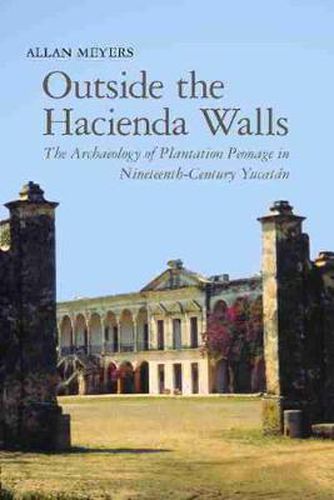Readings Newsletter
Become a Readings Member to make your shopping experience even easier.
Sign in or sign up for free!
You’re not far away from qualifying for FREE standard shipping within Australia
You’ve qualified for FREE standard shipping within Australia
The cart is loading…






The Mexican Revolution was a tumultuous struggle for social and political reform that ousted an autocrat and paved the way for a new national constitution. The conflict, however, came late to Yucatan, where a network of elite families with largely European roots held the reins of government. This privileged group reaped spectacular wealth from haciendas, cash-crop plantations tended by debt-ridden servants of Maya descent. When a revolutionary army from central Mexico finally gained a foothold in Yucatan in 1915, the local custom of agrarian servitude met its demise.
Drawing on a dozen years of archaeological and historical investigation, Allan Meyers breaks new ground in the study of Yucatan haciendas. He explores a plantation village called San Juan Bautista Tabi, which once stood at the heart of a vast sugar estate. Occupied for only a few generations, the village was abandoned during the revolutionary upheaval. Its ruins now lie within a state-owned ecological reserve.
Through oral histories, archival records, and physical remains, Meyers examines various facets of the plantation landscape. He presents original data and fresh interpretations on settlement organization, social stratification, and spatial relationships. His systematic approach to ‘things underfoot,’ small everyday objects that are now buried in the tropical forest, offers views of the hacienda experience that are often missing in official written sources. In this way, he raises the voices of rural, mostly illiterate Maya speakers who toiled as laborers. What emerges is a portrait of hacienda social life that transcends depictions gleaned from historical methods alone.
Students, researchers, and travelers to Mexico will all find something of interest in Meyers’s lively presentation. Readers will see the old haciendas–once forsaken but now experiencing a rebirth as tourist destinations–in a new light. These heritage sites not only testify to social conditions that prevailed before the Mexican Revolution, but also remind us that the human geography of modern Yucatan is as much a product of plantation times as it is of more ancient periods.
$9.00 standard shipping within Australia
FREE standard shipping within Australia for orders over $100.00
Express & International shipping calculated at checkout
The Mexican Revolution was a tumultuous struggle for social and political reform that ousted an autocrat and paved the way for a new national constitution. The conflict, however, came late to Yucatan, where a network of elite families with largely European roots held the reins of government. This privileged group reaped spectacular wealth from haciendas, cash-crop plantations tended by debt-ridden servants of Maya descent. When a revolutionary army from central Mexico finally gained a foothold in Yucatan in 1915, the local custom of agrarian servitude met its demise.
Drawing on a dozen years of archaeological and historical investigation, Allan Meyers breaks new ground in the study of Yucatan haciendas. He explores a plantation village called San Juan Bautista Tabi, which once stood at the heart of a vast sugar estate. Occupied for only a few generations, the village was abandoned during the revolutionary upheaval. Its ruins now lie within a state-owned ecological reserve.
Through oral histories, archival records, and physical remains, Meyers examines various facets of the plantation landscape. He presents original data and fresh interpretations on settlement organization, social stratification, and spatial relationships. His systematic approach to ‘things underfoot,’ small everyday objects that are now buried in the tropical forest, offers views of the hacienda experience that are often missing in official written sources. In this way, he raises the voices of rural, mostly illiterate Maya speakers who toiled as laborers. What emerges is a portrait of hacienda social life that transcends depictions gleaned from historical methods alone.
Students, researchers, and travelers to Mexico will all find something of interest in Meyers’s lively presentation. Readers will see the old haciendas–once forsaken but now experiencing a rebirth as tourist destinations–in a new light. These heritage sites not only testify to social conditions that prevailed before the Mexican Revolution, but also remind us that the human geography of modern Yucatan is as much a product of plantation times as it is of more ancient periods.